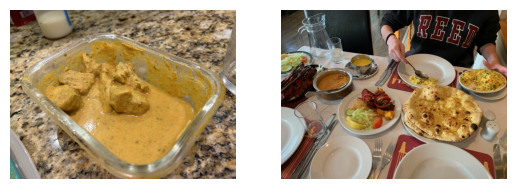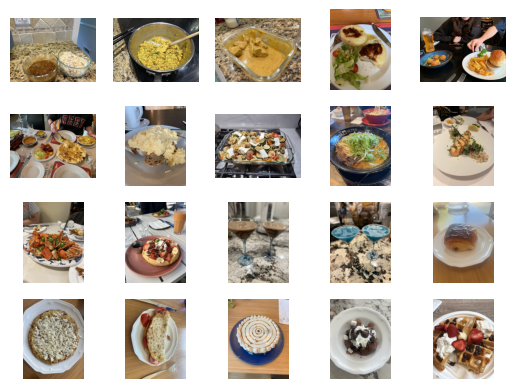SPARQL wrapper
We use a lightweight wrapper to make it possible to query ApertureDB in the RDF/SPARQL query language. This wrapper makes it easy for users already familiar with the SPARQL query language to compose queries against an ApertureDB instance.
Note that SPARQL queries will be neither as powerful nor (necessarily) as efficient as writing queries in the ApertureDB Query Language
%pip install aperturedb-python rdflib
# We're going to use the pandas library to display binding sets in a more readable format.
import pandas as pd
pd.set_option('display.width', 200)
pd.set_option('display.max_colwidth', 50)
Connect to ApertureDB
For the next part, we need access to a specific ApertureDB instance. There are several ways to set this up. The code provided here will accept ApertureDB connection information as a JSON string. See our Configuration help page for more options.
! adb config create --from-json --active
Create SPARQL wrapper object
The first thing we need to do to use SPARQL is to create a wrapper object. We're going to enable debug mode here, which makes the object cache some intermediate results so that we can take a peek under the covers.
from aperturedb.SPARQL import SPARQL
import json
# Create SPARQL object. We'll use the debugging feature to print interesting information.
sparql = SPARQL(debug=True)
What happens when we create the wrapper?
This wrapper object has a connection to an ApertureDB instance. It downloads the schema on creation, and sets up:
- Turtle namespaces
- A mapping from property URIs to the ApertureDB object types that use them
- A mapping from connection URIs to the ApertureDB objects that can be source and destination
Namespaces
Namespaces are just a shorthand used in certain RDF serializations to make URLs shorter.
- The namespace
p:can be used for ApertureDB property names. For example,p:namemeans a property calledname. - The namespace
c:can be used for ApertureDB connection classes. For examplec:HasIngredientrefers to the connection classHasIngredient.
This is usually all you need to know, but here is a list of all namespaces created.
You'll see that every object class (e.g. o:Ingredient) is also a namespace; this is used to generate URIs that correspond to ApertureDB's unique ids.
# Internal feature: You don't normally have to look at this
print("namespaces:", json.dumps({k: str(v) for k, v in sparql.namespaces.items()}, indent=2))
namespaces: {
"t": "http://aperturedb.io/type/",
"c": "http://aperturedb.io/connection/",
"p": "http://aperturedb.io/property/",
"o": "http://aperturedb.io/object/",
"knn": "http://aperturedb.io/knn/",
"Ingredient": "http://aperturedb.io/object/Ingredient/",
"_Descriptor": "http://aperturedb.io/object/_Descriptor/",
"_DescriptorSet": "http://aperturedb.io/object/_DescriptorSet/",
"_Image": "http://aperturedb.io/object/_Image/"
}
Properties
Every property in the schema becomes an RDF property in the p namespace.
In OWL terms, it's a functional data property.
Because it is possible for more than one object class to share the same property name, each property is mapped to a set of object classes. These indicate the possible domain types of the property. Because we're using a very simple data example here, these sets happen to all have size one. The range type is not indicated here.
# Internal feature: You don't normally have to look at this
print("properties:", json.dumps({sparql.graph.qname(k): str(v)
for k, v in sparql.properties.items()}, indent=2))
properties: {
"p:UUID": "{'Ingredient'}",
"p:category": "{'Ingredient'}",
"p:macronutrient": "{'Ingredient'}",
"p:micronutrient": "{'Ingredient'}",
"p:name": "{'Ingredient', '_Image'}",
"p:other_names": "{'Ingredient'}",
"p:subgroup": "{'Ingredient'}",
"p:_label": "{'_Descriptor'}",
"p:_dimensions": "{'_DescriptorSet'}",
"p:_name": "{'_DescriptorSet'}",
"p:Recipe%20URL": "{'_Image'}",
"p:adb_image_height": "{'_Image'}",
"p:adb_image_id": "{'_Image'}",
"p:adb_image_sha256": "{'_Image'}",
"p:adb_image_size": "{'_Image'}",
"p:adb_image_width": "{'_Image'}",
"p:caption": "{'_Image'}",
"p:contributor": "{'_Image'}",
"p:cuisine": "{'_Image'}",
"p:id": "{'_Image'}",
"p:location": "{'_Image'}",
"p:type": "{'_Image'}"
}
Connections
All connection classes in the schema also become RDF properties, but this time in the c namespace.
In OWL terms, these are non-functional object properties.
These properties are shown here with the domain and range constraints.
# Internal feature: You don't normally have to look at this
print("connections:", json.dumps({sparql.graph.qname(k): str(v)
for k, v in sparql.connections.items()}, indent=2))
connections: {
"c:HasIngredient": "({'_Image'}, {'Ingredient'})",
"c:_DescriptorConnection": "({'_Descriptor'}, {'_Image'})",
"c:_DescriptorSetToDescriptor": "({'_DescriptorSet'}, {'_Descriptor'})"
}
Create query and run it
Now it's time for us to run a query.
Our first example is going to look for all images (dishes) that have both chicken and butter as ingredients.
The result of a SPARQL SELECT query is a set of binding sets. We use a provided helper method to convert this into a Pandas Dataframe for display. This automatically converts URIs into QNames.
# Find all images with chicken and butter as ingredients
query = """
SELECT ?s ?caption {
?s c:HasIngredient [p:name "chicken"] , [p:name "butter"] ;
p:caption ?caption .
} LIMIT 10
"""
df = sparql.to_dataframe(sparql.query(query))
print(df)
s caption
0 _Image:7.3.157380 Chicken in Creamy tomato based gravy
1 _Image:7.7.157380 Butter chicken, special fried rice, garlic naa...
What about those images?
RDF/SPARQL is a text-based language and does not handle blobs. The wrapper provides some utility methods get_blob, get_image, and show_image to handle images. Currently these fetched from ApertureDB in a separate query, but a future version may provide automatic caching or batching.
sparql.show_images(df.s)

Under the covers
To implement this wrapper, ApertureDB is working with the rdflib SPARQL engine, adding a custom evaluation function. Specifically, we are handling the "Basic Graph Pattern" (BGP) node in the SPARQL algebra.
Triples
Under the covers, rdflib will parse the query and turn it into flattened triples. Blank nodes get special identifiers. This forms the input to ApertureDB's SPARQL wrapper. This is what we see for the query above.
# Internal debug feature: Not available by default
print(sparql._format_triples(sparql.triples))
N28121daeb1314e298b639623ea6f556f p:name chicken .
N6b09f3b7d7b8490da0b2700869014922 p:name butter .
?s c:HasIngredient N28121daeb1314e298b639623ea6f556f .
?s c:HasIngredient N6b09f3b7d7b8490da0b2700869014922 .
?s p:caption ?caption
ApertureDB query
When the wrapper is passed these triples, it converts them into an ApertureDB query.
Experienced SPARQL users might want to use this debug feature to order to learn how to use this language directly.
# Internal debug feature: Not available by default
print(json.dumps(sparql.input_query, indent=2))
[
{
"FindEntity": {
"with_class": "Ingredient",
"_ref": 1,
"uniqueids": true,
"constraints": {
"name": [
"==",
"chicken"
]
}
}
},
{
"FindEntity": {
"with_class": "Ingredient",
"_ref": 2,
"uniqueids": true,
"constraints": {
"name": [
"==",
"butter"
]
}
}
},
{
"FindImage": {
"_ref": 3,
"uniqueids": true,
"is_connected_to": {
"all": [
{
"ref": 1,
"direction": "in",
"connection_class": "HasIngredient"
},
{
"ref": 2,
"direction": "in",
"connection_class": "HasIngredient"
}
]
},
"group_by_source": true,
"results": {
"list": [
"caption"
]
}
}
}
]
ApertureDB response
ApertureDB is then able to run the query and generate a response.
# Internal debug feature: Not available by default
print(json.dumps(sparql.output_response, indent=2))
[
{
"FindEntity": {
"entities": [
{
"_uniqueid": "10.14.157420"
}
],
"returned": 1,
"status": 0
}
},
{
"FindEntity": {
"entities": [
{
"_uniqueid": "10.11.157420"
}
],
"returned": 1,
"status": 0
}
},
{
"FindImage": {
"entities": {
"10.11.157420": [
{
"_uniqueid": "7.3.157380",
"caption": "Chicken in Creamy tomato based gravy"
},
{
"_uniqueid": "7.7.157380",
"caption": "Butter chicken, special fried rice, garlic naan, peshwari naan"
}
],
"10.14.157420": [
{
"_uniqueid": "7.3.157380",
"caption": "Chicken in Creamy tomato based gravy"
},
{
"_uniqueid": "7.7.157380",
"caption": "Butter chicken, special fried rice, garlic naan, peshwari naan"
}
]
},
"group_by_source": true,
"returned": 2,
"status": 0
}
}
]
We then convert the query response into a set of solutions, each of which is a mapping of variables to values.
# Internal debug feature: Not available by default
solutions = [ {str(k): sparql._format_node(v) for k, v in solution.items()} for solution in sparql.solutions ]
print(len(solutions))
for solution in solutions:
print(solution)
2
{'s': '_Image:7.7.157380', 'caption': 'Butter chicken, special fried rice, garlic naan, peshwari naan'}
{'s': '_Image:7.3.157380', 'caption': 'Chicken in Creamy tomato based gravy'}
Another query
Before we asked for images with chicken AND butter as ingredients.
Now we're going to ask for chicken OR butter.
Note that we use the VALUES keyword in our SPARQL query.
This means that, under the covers, we're calling ApertureDB twice, once for each value, but rdflib's SPARQL engine handles that for us.
# Find all images with chicken or butter as ingredients
query = """
SELECT ?s ?caption WHERE {
VALUES ?ingredient { "chicken" "butter" }
?s c:HasIngredient [p:name ?ingredient] ;
p:caption ?caption .
} LIMIT 10
"""
df = sparql.to_dataframe(sparql.query(query))
print(df)
sparql.show_images(df.s)
s caption
0 _Image:7.3.157380 Chicken in Creamy tomato based gravy
1 _Image:7.7.157380 Butter chicken, special fried rice, garlic naa...
2 _Image:7.10.157380 won ton soup, chicken chow mein, chicken katsu...
3 _Image:7.3.157380 Chicken in Creamy tomato based gravy
4 _Image:7.7.157380 Butter chicken, special fried rice, garlic naa...
5 _Image:7.16.157380 fried lobster
6 _Image:7.22.157380 Buttery croissants with chocolate inside

One more query
Let's show off some more features of the SPARQL language.
Here we use COUNT, GROUP BY, and ORDER BY.
These are all being handled by the SPARQL engine, but a future integration might optimize them.
# Find the top 10 ingredients
query = """
SELECT (COUNT(*) AS ?count) ?ingredient WHERE {
?s c:HasIngredient [p:name ?ingredient] .
} GROUP BY ?ingredient ORDER BY DESC(?count) LIMIT 10
"""
df = sparql.to_dataframe(sparql.query(query))
print(df)
count ingredient
0 5 egg
1 4 butter
2 4 noodles
3 3 all-purpose flour
4 3 chicken
5 3 milk
6 3 rice
7 2 eggplant
8 2 sugar
9 2 potato
KNN search
We've shown off how to use ApertureDB to answer graph queries using SPARQL, but ApertureDB is not just a graph database. It integrates a high-performance vector store. Again, SPARQL is not a good language for handling binary data, but this integration provides support for descriptor search.
Doing descriptor search requires something like the following:
?descriptor knn:search [
knn:vector "[1,2,3,4,5]" ; # vector for descriptor as a JSON string
knn:set "RecipeEmbeddings" ; # descriptor set
knn:k_neighbors 5 ; # number of results
knn:knn_first true ; # optional
knn:engine "HNSW" ; # optional
knn:metric "L2" ; # optional
knn:distance ?distance # optional, binds to distance literals
] .
Here ?descriptor is an ApertureDB Descriptor, and the object of knn:search specifies a search to be performed.
Here is an example query.
Note that we're using the helper method encode_descriptor to convert the vector into a JSON string.
import numpy as np
descriptor = np.random.rand(512)
query = f"""
SELECT ?i ?distance ?d ?caption WHERE {{
?d knn:similarTo [
knn:set 'ViT-B/16' ;
knn:k_neighbors 20 ;
knn:vector "{sparql.encode_descriptor(descriptor)}" ;
knn:distance ?distance
] ;
c:ANY ?i . # Use fake connection because we can't say c:_DescriptorConnection
?i p:caption ?caption .
}}
"""
Now we can run the query and get back images, descriptors, and distances.
df = sparql.to_dataframe(sparql.query(query))
print(df)
i distance d caption
0 _Image:7.7.157380 247.529144 _Descriptor:3.7.157380 Butter chicken, special fried rice, garlic naa...
1 _Image:7.5.157380 248.080185 _Descriptor:3.5.157380 Baked potato with Scottish Cheddar, Branston P...
2 _Image:7.25.157380 251.692139 _Descriptor:3.25.157380 Fresh homemade tortillas with egg and tomatoes
3 _Image:7.22.157380 255.406448 _Descriptor:3.22.157380 Buttery croissants with chocolate inside
4 _Image:7.3.157380 255.587692 _Descriptor:3.3.157380 Chicken in Creamy tomato based gravy
5 _Image:7.0.157380 256.033447 _Descriptor:3.0.157380 Beans with rice
6 _Image:7.28.157380 256.846130 _Descriptor:3.28.157380 Trader joes chocolate icecream with whipped cr...
7 _Image:7.15.157380 258.259705 _Descriptor:3.15.157380 salmon, white beans
8 _Image:7.29.157380 258.354492 _Descriptor:3.29.157380 Waffles with whipped cream, chocolate and stra...
9 _Image:7.24.157380 259.150879 _Descriptor:3.24.157380 Egg potatoes onions and mozarella for breakfast
10 _Image:7.21.157380 259.198486 _Descriptor:3.21.157380 Stronger margarita with blue curacao
11 _Image:7.14.157380 260.632385 _Descriptor:3.14.157380 green onion, bean sprouts, pork, noodles
12 _Image:7.1.157380 260.968903 _Descriptor:3.1.157380 Scrambled cottage cheese with finely chopped o...
13 _Image:7.20.157380 261.014465 _Descriptor:3.20.157380 Martini with chocolate liquer
14 _Image:7.18.157380 262.046631 _Descriptor:3.18.157380 waffle, smoothie
15 _Image:7.6.157380 262.171783 _Descriptor:3.6.157380 Haggis bonbons served with an apple puree, ste...
16 _Image:7.11.157380 262.211700 _Descriptor:3.11.157380 scrambled egg on brown toast, garnished with c...
17 _Image:7.13.157380 262.473602 _Descriptor:3.13.157380 eggplant, tomato, zuchinni in noodles with fet...
18 _Image:7.16.157380 269.028503 _Descriptor:3.16.157380 fried lobster
19 _Image:7.27.157380 269.846191 _Descriptor:3.27.157380 Chocolate chestnut mousse cream and whipped cream
Finally we can show the images.
sparql.show_images(df.i)

